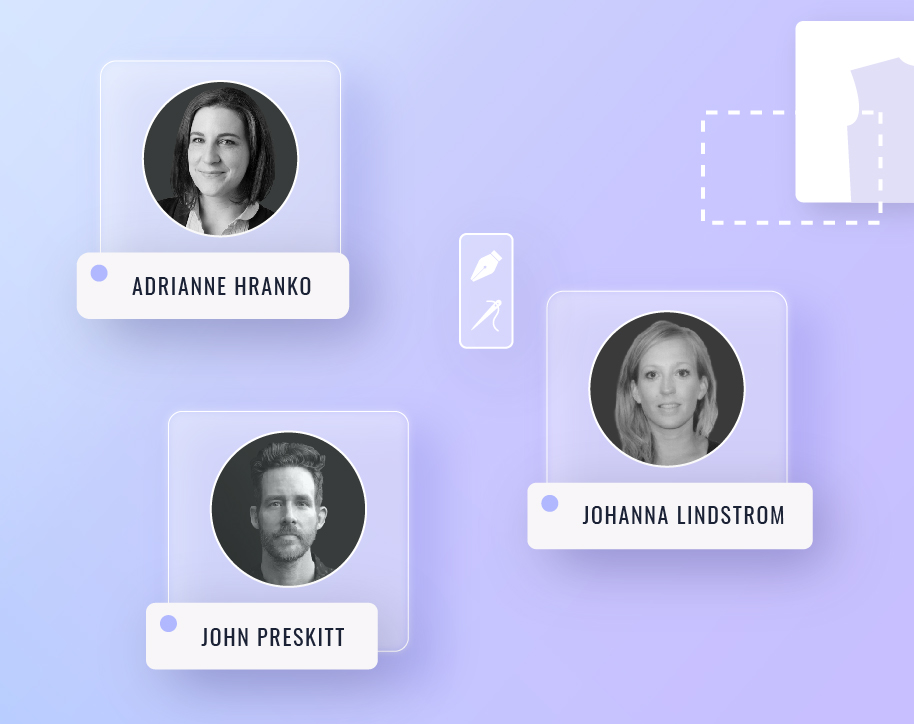Faster Design-to-Production for Intimates Using Virtual Prototyping
Discover how virtual prototyping helps intimate apparel brands cut costs, reduce returns, and speed time-to-market with accurate digital design tools.
December 18, 2022

We recently hosted a meetup in the Portland area for both existing and aspiring VStitcher users. It was a 3D-packed evening filled with insightful conversation and transformative knowledge-sharing. During the event, we had the pleasure of hearing from talented apparel creatives from leading outdoor and sportswear brands Columbia and Nike who shared their unique approaches and experiences when it comes to working with digital apparel technology.
Catch the highlights from their presentations below:
Adrianne and Johanna reflect on their experiences working at Columbia as the company navigates its 3D journey, including how 3D has transformed interdepartmental communication and collaboration, how they have trained their teams to adopt a new visual language and built designer trust in the accuracy of 3D, and successfully eliminated rounds of physical prototyping with the ability to make informed decisions over digital twins of the physical garment.
For Columbia, much of their focus began with looking at how they could streamline communication when it comes to conducting pattern changes, grading, and sizing, a typically lengthy and tedious process. “3D changed communication and collaboration a lot,” says Johanna. “I can communicate what kind of pattern changes I want to make to a prototype that I receive now that we have much better tools to communicate these changes, not just verbally, but in the program.”
Over time, Adrianne and Johanna worked closely with the designers to establish trust in the digital prototype by comparing it to the physical sample and “teaching the teams to read a visual language,” adds Adrianne. Once trust was built, the next hurdle to overcome was utilizing 3D technology to better collaborate on design intent and ensure that the first physical prototype was as close to it as possible without having to conduct multiple rounds of physical sampling. “The better those first physical prototypes look, the better we do businesswise,” says Adrianne.
Not only does 3D technology facilitate better communication, but it also allows for faster turnaround times, especially when it comes to conducting iterations for partners overseas. “ We’re able to make the tweaks to multiple digital prototypes at once, perfect the garment, and make it better before receiving that first physical prototype,” says Johanna.
VStitcher has also been of great use for Colombia in grading and sizing, enabling Fit Engineers to visualize the pattern grading across different sizes and body types using different avatars.
Hear how John utilized VStitcher and Stylezone which were available to him as a Browzwear Guild member to work on DPC consultation projects for organizations new to 3D, as well as the innovative ways Nike uses DPC for merchandising and the implications that 3D clothing design software like VStitcher have towards these in-store experiences.
With several years of experience with VStitcher under his belt, John brought his skill into Nike, focusing on utilizing 3D technology for Digital Product Creation (DPC).
Throughout his career, John has utilized 3D technology for a variety of apparel, from hoodies and T-shirts through to denim, exploring DPC for sales and merchandising. As a Browzwear Professional Guild member, he was exposed to various opportunities within the field that would enable him to further his skills in VStitcher.
“DPC doesn’t just help a company in the early stages, it can be all the way through,” says John. “You can really use that digital sample just as you would for a perfect finished sample.”
Discover how virtual prototyping helps intimate apparel brands cut costs, reduce returns, and speed time-to-market with accurate digital design tools.
From sketching and patternmaking to fabric sourcing, these fashion design apps will help you take your creations to the next level.
Dive into the insights from The Interline’s AI Application Era Session where Browzwear leaders discuss the importance of AI in digital product...